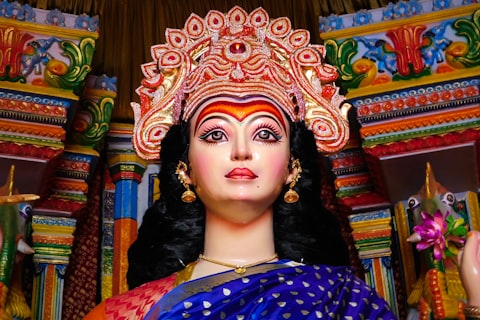The Goal of Polygamy
Polygamy, a practice of having more than one spouse, has been a subject of diverse perspectives and interpretations across different cultures and societies. The goal of polygamy is influenced by various factors, including religious beliefs, cultural norms, and individual circumstances. Understanding the underlying objectives and implications of polygamous relationships provides insight into the complexities and dynamics of this marital practice.
Introduction: Exploring the Objectives of Polygamy
Polygamy, encompassing both polygyny (one husband with multiple wives) and polyandry (one wife with multiple husbands), reflects a multifaceted institution with historical, religious, and social dimensions. The goals and motivations behind polygamous unions are shaped by a myriad of cultural, religious, and personal considerations, underscoring the need for a nuanced examination of its underlying objectives.
Cultural and Social Context
- Polygamy may serve as a means of strengthening familial and communal ties within certain cultural contexts.
- It can be a response to demographic imbalances or societal needs, aiming to provide support and security within the community.
Religious and Spiritual Considerations
- In some religious traditions, polygamy is perceived as a means of fulfilling religious obligations and responsibilities.
- The practice may be aligned with religious teachings and historical precedents, reflecting a spiritual dimension to the marital arrangement.
Economic and Practical Support
- Polygamous unions may be pursued to enhance economic stability and household management, particularly in agrarian or communal settings.
- The pooling of resources and labor can contribute to the welfare and sustenance of the extended family unit.
Fertility and Progeny
- In certain cultural contexts, polygamy may be associated with the desire for a larger progeny and the perpetuation of familial lineage.
- The practice may be motivated by the aspiration to ensure the continuity and expansion of the family's legacy.
Emotional and Social Fulfillment
- Polygamy can be pursued with the intention of providing emotional and social support to individuals within the marital network.
- It may offer companionship, caregiving, and mutual assistance, fostering a sense of interconnectedness and solidarity.
Conclusion: Understanding the Complexities of Polygamy
The goals of polygamy are multifaceted, reflecting a confluence of cultural, religious, and practical considerations. By delving into the diverse objectives and motivations underlying polygamous relationships, we gain a deeper appreciation of the complexities and nuances inherent in this marital practice.
This exploration provides a nuanced understanding of the multifaceted goals and motivations associated with polygamous unions, shedding light on the diverse cultural, religious, and practical considerations that shape this complex marital institution. If you require further elaboration on specific aspects or additional content, feel free to let me know!
The Goal of Polygamy
Keywords
Polygamy Cultural Norms Religious Beliefs
Introduction: Exploring the Objectives of Polygamy
Polygamy encompasses both polygyny and polyandry, reflecting a multifaceted institution with historical, religious, and social dimensions. The goals and motivations behind polygamous unions are shaped by cultural, religious, and personal considerations.
:keypoints:
-
Polygyny: One husband, multiple wives
-
Polyandry: One wife, multiple husbands
-
Multifaceted institution with historical, religious, and social dimensions
Cultural and Social Context
Polygamy may strengthen familial and communal ties and respond to demographic imbalances or societal needs, providing support and security within the community.
:keypoints:
-
Strengthening familial ties
-
Responding to demographic imbalances
-
Providing community support and security
Religious and Spiritual Considerations
In some religious traditions, polygamy fulfills religious obligations and is aligned with religious teachings and historical precedents, adding a spiritual dimension to the marital arrangement.
:keypoints:
-
Fulfilling religious obligations
-
Aligning with religious teachings
-
Spiritual dimension to marriage
Economic and Practical Support
Polygamous unions may enhance economic stability and household management, especially in agrarian or communal settings, by pooling resources and labor.
:keypoints:
-
Enhancing economic stability
-
Improving household management
-
Pooling resources and labor
Fertility and Progeny
Polygamy is sometimes associated with the desire for a larger progeny and the perpetuation of familial lineage, motivated by the aspiration to continue and expand the family's legacy.
:keypoints:
-
Desire for a larger progeny
-
Perpetuation of familial lineage
-
Aspiration for family continuity
Emotional and Social Fulfillment
Polygamy can provide emotional and social support, offering companionship, caregiving, and mutual assistance, fostering interconnectedness and solidarity.
:keypoints:
-
Providing emotional and social support
-
Fostering companionship and caregiving
-
Encouraging interconnectedness and solidarity
Conclusion: Understanding the Complexities of Polygamy
The goals of polygamy are multifaceted, reflecting cultural, religious, and practical considerations, providing a deeper appreciation of the complexities and nuances inherent in this marital practice.
:keypoints:
-
Multifaceted goals
-
Cultural, religious, and practical considerations
-
Appreciation of complexities and nuances
Figures
Cultural and Social Impact of Polygamy:
Images




